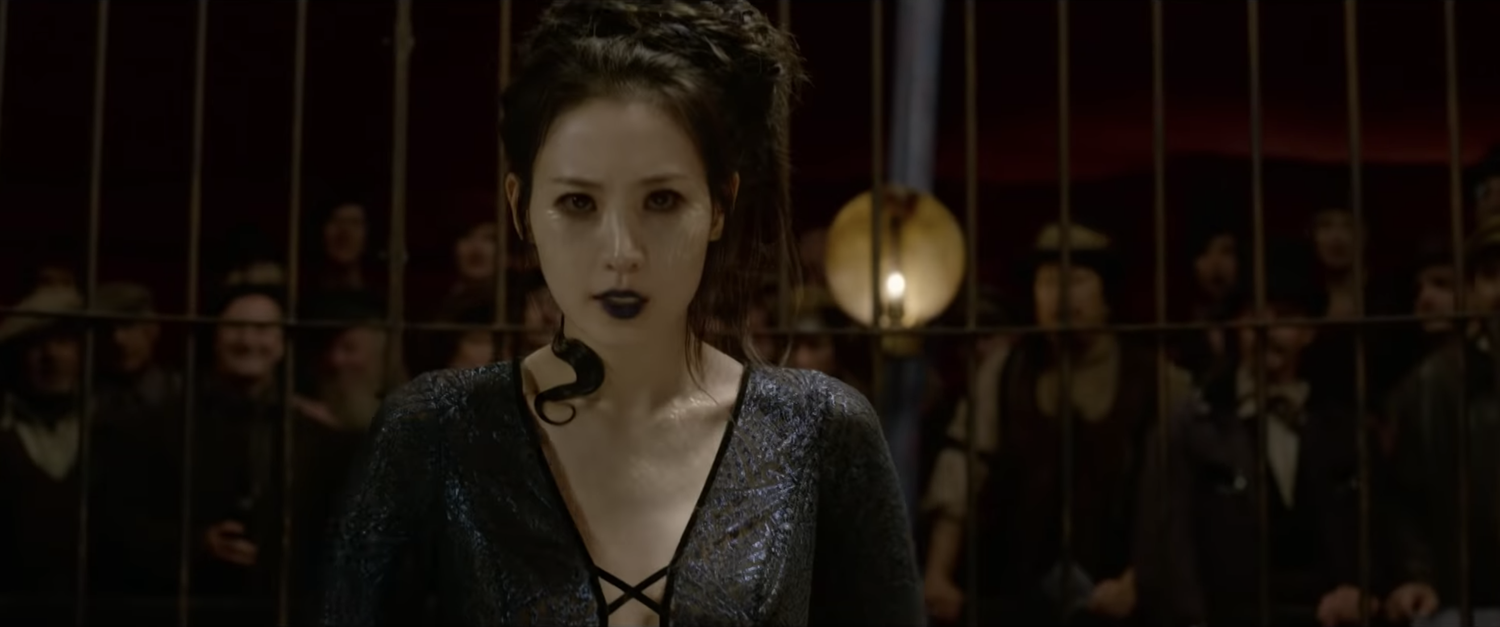
News
Summers Will Not Finish Semester of Teaching as Harvard Investigates Epstein Ties

News
Harvard College Students Report Favoring Divestment from Israel in HUA Survey

News
‘He Should Resign’: Harvard Undergrads Take Hard Line Against Summers Over Epstein Scandal

News
Harvard To Launch New Investigation Into Epstein’s Ties to Summers, Other University Affiliates

News
Harvard Students To Vote on Divestment From Israel in Inaugural HUA Election Survey
What the Hell Happened: Voldemort's Snake is Actually an Asian Woman

The final trailer for “Fantastic Beasts: The Crimes of Grindewald” broke the news that Voldemort’s pet snake, Nagini, used to be a human long before she appeared in the Harry Potter series. How long had J.K. Rowling been harboring this backstory in her mind? “Only for around 20 years,” she tweeted. In Rowling’s novels, Nagini slithers around Voldemort’s feet, lives to obey his murder orders, houses part of his soul, and habitually sinks her venomous fangs into his victims. By contrast, the upcoming spinoff will show her as a human circus performer whose blood curse will eventually turn her into a snake forever. To complicate the situation even more, the trailer reveals that her human form is South Korean actress Claudia Kim dressed as a reptilian cabaret goth.
The casting of an Asian woman in Nagini’s role has been controversial. It should be. From the little information we have about pre-Horcrux Nagini, it still looks awfully possible that the screenwriters designed the persona by dumping several Hollywood-produced Orientalist stereotypes into a cauldron and stirring them with a pinch of magic. (Warner Bros. is a Hollywood studio, though they filmed in Leavesden.)
The Nagini we know from the books is not just subservient, but a literal servant whose every tail flick is attuned to Voldemort’s will. She also harbors the coldness and aggression that mark a “Dragon Lady” caricature when transferred onto an East Asian woman, and she renders literal the monster-human dichotomy that is usually a figurative description. Finally, the character seems to approximate the Asian woman prostitute caricature as well. Though she does not perform sex work, the display of her body in a circus is a queasy plot point, especially when combined with her sexually suggestive presentation (as seen in the trailer) and future of servitude to a man (as seen in the book series).
These are the same stereotypes that facilitated the United States’ xenophobia, systematic deportations, and colonialism and militarism in Asia. These themes, in turn, are manifestations of the theme of intolerance that “Harry Potter” as a whole condemns. In other words, this character has the potential to be terrible.
However, no character can be fully assessed based on a trailer, and she also has the potential to be an unconventional and bold addition to the films. A few things could redeem the new Nagini, and I am holding out hope for these developments come Nov. 16, when “Fantastic Beasts” hits theaters.
This backstory could be a puzzle piece filling a gap in the main book series. Though some are skeptical that Rowling had planned Nagini’s human backstory for decades, one reason to believe her is that the name “Nagini” comes from a mythology of human-snake creatures. This origin might also explain how Nagini was able to embody Bathilda Bagshot in “Harry Potter and the Deathly Hallows.” Hopefully, the character will be consistent with and enhance the stories we are familiar with.
In the Muggle universe, another helpful development would be accurate cultural citations. Though Rowling defended the casting by tweeting that the myth of the Naga came from Indonesia, author Amish Tripathi responded by writing that the myth is of Indian origin. Yikes. Attributing an Indian myth to Indonesia to justify casting a South Korean actress was not a strong strategy. On the bright side, it has introduced a fiery conversation about Eastern mythology to this Western-centric franchise.
Still, the best thing to see from Nagini would be a non-stereotypical character arc. We know how her story ends. Her subservience is inevitable, as is her brutal death. But along the way, her motivations, relationships, and personality traits could very well be more compelling than the prostitute, servant, and “Dragon Lady” identities implied so far.
Though much of the Harry Potter plotline is an allegory for racial discrimination, J.K. Rowling has not provided readers with any strong characters of color — around nine minor characters are identifiable as people of color. None are “favorite character” material. The novels feature three Asian women (Cho Chang and Padma and Parvati Patil), whose personalities are best summarized as “annoying” and whose most prominent moments are as romantic placeholders in the main characters’ love lives. So the stakes for each new non-white character are high. Along with Nagini, the “Fantastic Beasts” movies have two more opportunities for complex characterizations in Leta Lestrange (Zoe Kravitz) and President Seraphina Picquery (Carmen Ejogo). My dream is that “Fantastic Beasts: The Crimes of Grindewald” will provide us with an even bigger plot twist than Nagini’s human origin story. The happiest surprise would be for the character to wriggle free of Hollywood’s stereotype boxes and, in the process, amplify the franchise’s call for diversity.
Correction: Oct. 9, 2018
A previous version of this article incorrectly indicated that Cho Chang and Padma and Parvati Patil are Asian-American. In fact, they are not American.
—Staff writer Liana E. Chow can be reached at liana.chow@thecrimson.com.
Want to keep up with breaking news? Subscribe to our email newsletter.
